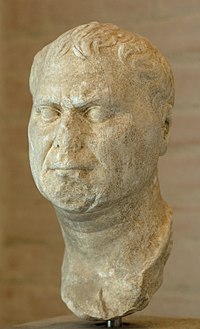Octavius
Octavius,
a chess engine by Luke Pellen relying purely on an evaluation based on a four-layer neural network without any material analysis, choosing the move with the best score on its single output neuron, performing a one ply look ahead.
Despite Sebastian Thrun's remark, that using the raw board representation as input of a neural network is a poor choice [2], but quite similar to one input representation of the Neural MoveMap Heuristic by Levente Kocsis et al. [3], Octavius has an input layer of 768 (12x64) nodes, a sequence of 12 numbers (11 or 12 times 0.0, 1 or 0 times 1.0) for each square, where a 1.0 was given for the particular piece (if any) residing on that square. Two hidden layers with 1024 and 512 nodes are feed forward to one output node, which represents the score of the position for one side to move. In total, Octavius' net has 2305 nodes with 1,311,232 connections.
Selected Games
Beginning in 1999, Octavius performed 284,552 backpropagations up to April 26, 2004, when it won its first game against his creator [4]:
[Event "Octavius Test"] [Site "Lukes Computer"] [Date "2004.04.26"] [Round "?"] [White "Luke Pellen"] [Black "Octavius P4Oct4.ann"] [Result "0-1"] 1.e4 Nf6 2.Nc3 e5 3.Bb5 c6 4.Ba4 Bc5 5.Nf3 O-O 6.O-O d6 7.d3 Bg4 8.Bb3 Nh5 9.a3 Re8 10.Ba2 Qf6 11.Bg5 Qg6 12.b4 Bb6 13.Bh4 Nf4 14.Kh1 Nd7 15.g3 Nh3 16.Qe2 h5 17.Rae1 d5 18.exd5 cxd5 19.Nxd5 e4 20.dxe4 Rxe4 21.Qxe4 f5 22.Qe7 Bxf3# 0-1
See also
Publications
- Luke Pellen (2008). How not to Imitate a Human Being. Chapter 25 in Robert Epstein, Gary Roberts, Grace Beber (eds.) (2008). Parsing the Turing Test. Philosophical and Methodological Issues in the Quest for the Thinking Computer, Springer
Forum Posts
- announcement: Octavius V1.3 ANN chess s/w available... by Luke Pellen, rgcc, June 22, 1999
- Re: Whatever happened to Neural Network Chess programs? by Cnidarian, rgcc, March 30, 2000
- A WIN FOR OCTAVIUS! - Chess ANN by Luke Pellen, rgcc, October 15, 2003
- Chess Neural Network: ANOTHER VICTORY FOR OCTAVIUS! by Luke Pellen, rgcc, May 04, 2004
External Links
- Octavius (disambiguation) from Wikipedia
- Octavius (praenomen) from Wikipedia
- Octavia (gens) from Wikipedia
- Gaius Octavius (disambiguation) from Wikipedia
- Gaius Octavius (praetor 61 BC) from Wikipedia
- Augustus from Wikipedia
- Octavius Mamilius from Wikipedia
- Eudaf Hen from Wikipedia
- Prince Octavius of Great Britain from Wikipedia
- Octavius (ship) from Wikipedia
References
- ↑ Head of statue, thought to be Gaius Octavius, ca. 60 BC, Munich Glyptothek, Room 11, Photo by Bibi Saint-Pol, February 08, 2007, Wikimedia Commons, Gaius Octavius (praetor 61 BC) from Wikipedia
- ↑ Sebastian Thrun (1995). Learning to Play the Game of Chess. pdf
- ↑ Levente Kocsis, Jos Uiterwijk, Eric Postma, Jaap van den Herik (2002). The Neural MoveMap Heuristic in Chess. CG 2002, pdf
- ↑ Chess Neural Network: ANOTHER VICTORY FOR OCTAVIUS! by Luke Pellen, rgcc, May 04, 2004
